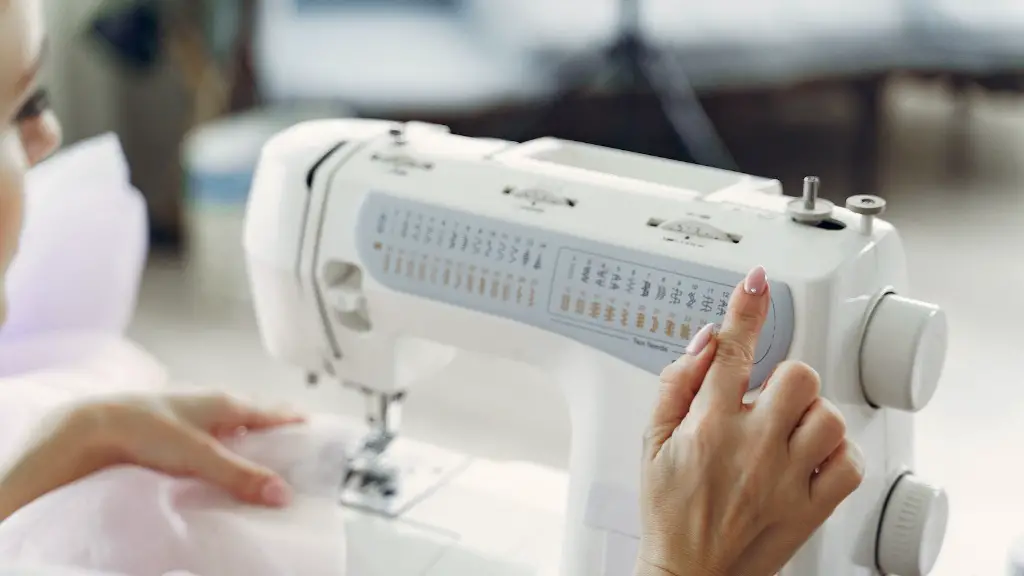Prepare the Machine
Before you start using your Babylock sewing machine, it is important to prepare it. This includes checking to make sure all the components are in good working order and the thread tension is set correctly. First, lock the needle in place so that it does not move when you are oiling the machine. Make sure the needle is correctly threaded, and then adjust the thread tension if needed. You can also use a sewing-machine oil that has been specifically formulated for machines like the Babylock.
Oil the Machine
Now it’s time to oil your Babylock sewing machine. Before you start, make sure the machine is turned off and unplugged. To begin, use a can of sewing machine oil and spray a few drops onto a soft cloth. Gently apply the oil on the mechanical parts of the machine—such as the wheel, the hand wheel, and other moving components—by using a cotton swab or lint-free cloth. Wipe off any excess oil with a soft cloth.
The Moving Parts
Be sure to pay extra attention to the machine’s moving parts. This includes the wheel, arm, and hook. Moving parts have a tendency to accumulate dirt, dust, and thread, this can cause problems when trying to sew. Oil can help keep the machine running smoothly and allow for easy fabric glide. Continuing to oil regularly is important for extending the life of the Babylock sewing machine. If you notice any wear or damage to the machine, take it to an authorised service station for repairs.
Under the Cover
It is also important to apply some oil underneath the cover of the Babylock sewing machine. This is an essential step in between more thorough oilings, because it helps to lubricate the gears and other hidden parts. To get to the hidden parts, unscrew the cover of the machine and put on a pair of latex gloves. Make sure that all the small components are lightly oiled, then wipe off any excess oil with a dry cloth.
After Oiling
Now that you’ve successfully oiled your Babylock sewing machine, it’s time to put it back together. Make sure that all the screws are tightened and the cover is securely in place. You should also be sure to plug the machine in and ensure that all the components are working correctly. You don’t want to start sewing just yet—it’s always best to do a trial run first. Once the trial run is complete and you’re satisfied with the machine’s performance, you can begin using the machine with confidence.
Regular Oiling
Regularly oiling your Babylock sewing machine is an essential part of maintenance. This should be done at least every six months to make sure the machine is in tip-top shape. Oiling the machine helps to reduce friction and wear on the machine’s components, making it run smoother, faster, and quieter. As with any sewing machine, it’s always best to refer to the manufacturer’s instructions for best results.
Sewing Considerations
Keep in mind that the type of fabric and thickness you are sewing with can affect the tension settings on your Babylock sewing machine. For example, thicker fabrics require more tension than lighter fabrics. Sewing with finely-crafted fabrics, such as silk, lace, and fine wools, also requires very specific settings. If you’re not sure what settings to use for different fabrics, it’s best to refer to the manufacturer’s instructions, or you can also ask an expert at a fabric store for advice.
Threading the Machine
Thread tension is one of the most important considerations when oiling your Babylock sewing machine. The thread must be correctly threaded, and the tension knob must be set correctly to ensure a good stitch. Be sure to follow the manufacturer’s instructions for best results. Properly tensioned thread can help to prevent the fabric from bunching and jamming the machine.
Storing the Machine
When you’re finished with your Babylock sewing machine, it is important to store it properly. Make sure the machine is unplugged and all the parts are cleaned and oiled. Then store the machine in a cool, dry place away from any direct sunlight. The humidity can also cause damage to the machine, so be sure to keep it in a place with low humidity.
Technical Issues
If your Babylock sewing machine is not performing correctly, the first thing you should do is check the manual to see if there are any technical issues that need to be addressed. If you cannot find the solution in the manual, you should contact the manufacturer for help or take it to a service station for repairs. Oiling your machine properly can help to ensure that it works correctly and extends its lifespan.


